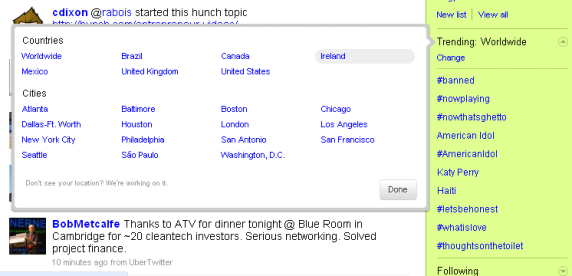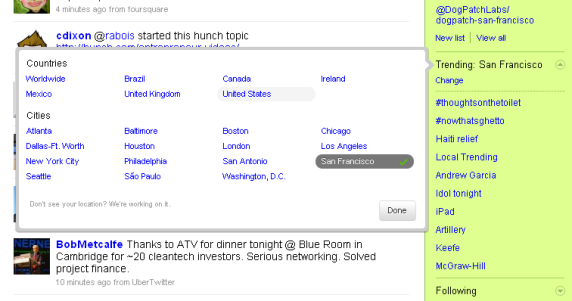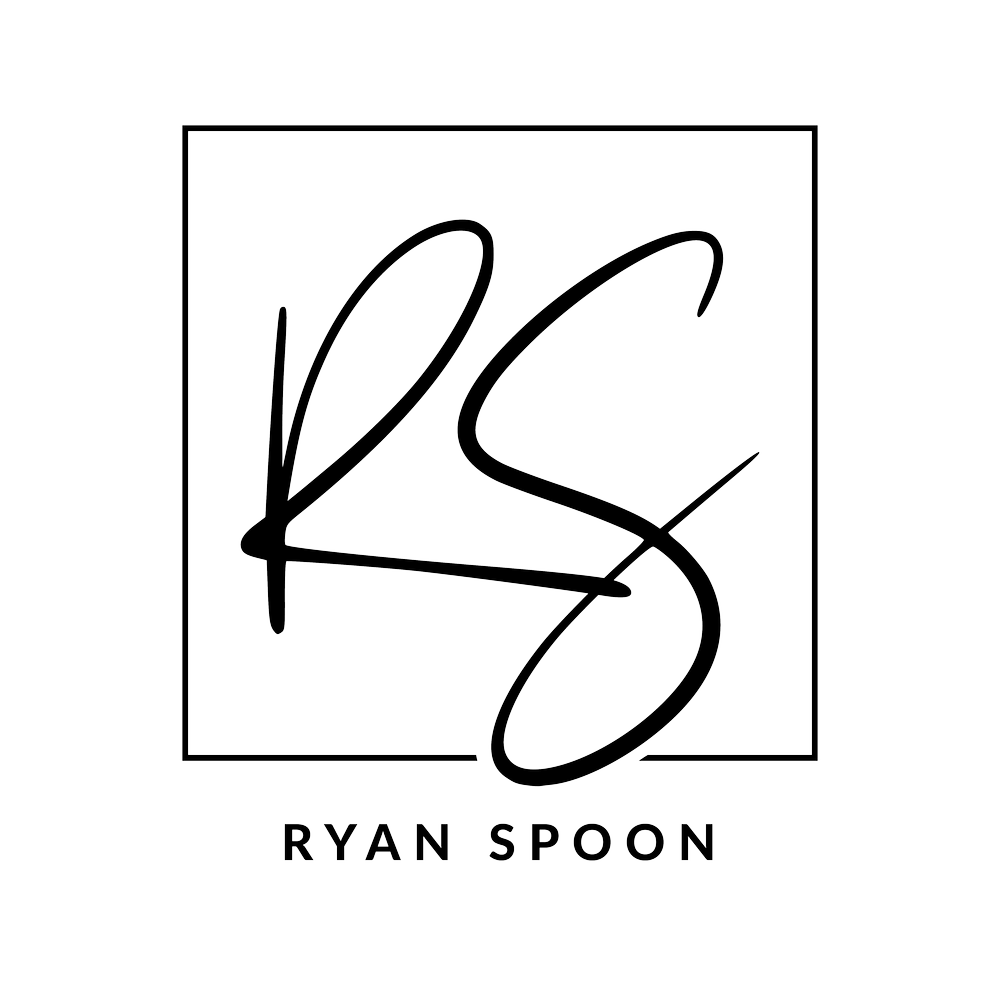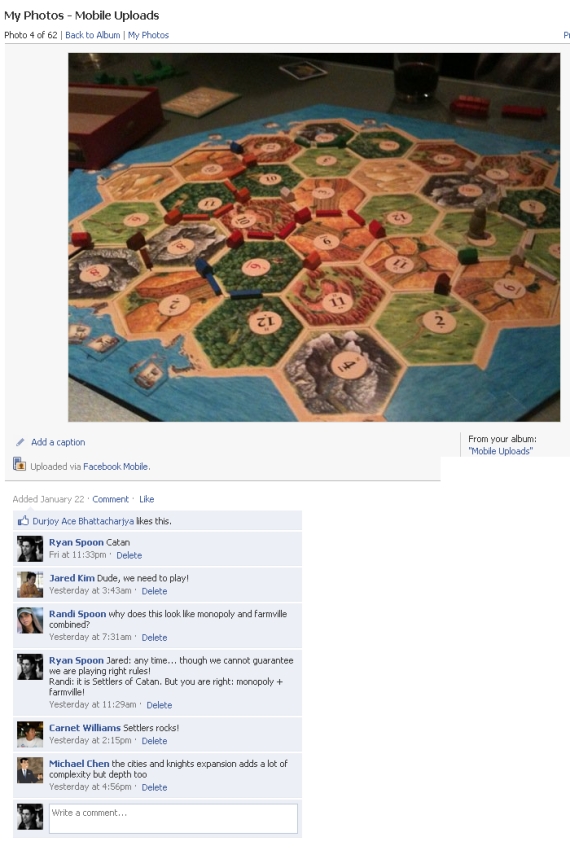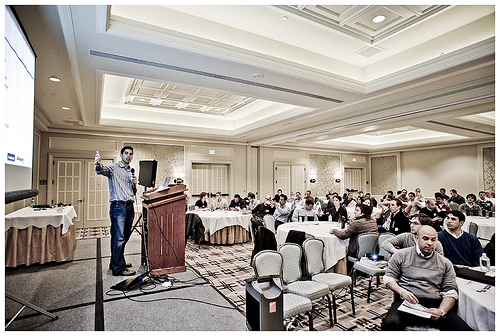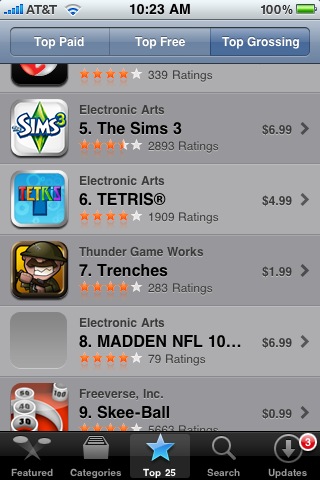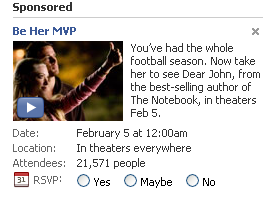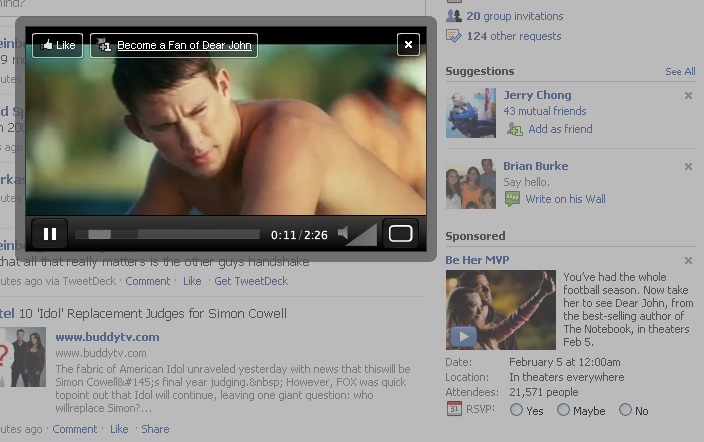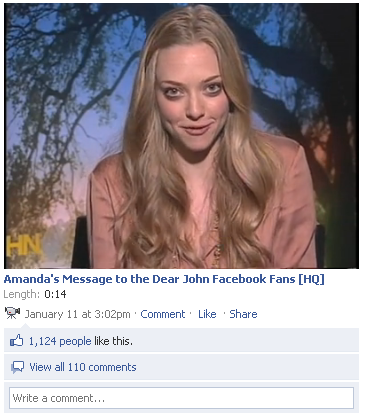I might be in the minority here, but I consider Twitter's launch of Local Trends Twitter's most significant product advancement since... launch? It will no doubt be overshadowed by tomorrow's Apple announcement - but local trends are important for, among numerous others, three primary reasons: 1. It marks the next generation of Twitter: geo-location posts, communities and trends. Tonight is step one (you could argue the Town.me acquisition and some of their key hires were actually the first steps... but you get the point). 2. Twitter's Developer-friendly platform will enable rampant development and innovation in the local and social spaces. Imagine Foursquare, Gowalla, MyTown, etc all on steroids.
3. Facebook's location play must be coming. With Facebook and Twitter already dominating social discussion and mobile usage, they both have a chance to redefine 'check-ins', location based services...
4. ... and geo-location based advertising. Which could be Twitter's revenue fountain, open up a compelling off-Twitter ad network and/or be the next evolution of mobile advertising. Each of these points are relevant to Facebook as well - should they move aggressively into local.
Sure... I might be speculating too big and too far - but Twitter and Facebook can (and I predict will) revolutionize "local", both disrupting the landscape and enabling development / innovation.
As an aside, take a look at the difference between the national Twitter trends and San Francisco's trends... it is very clear (as if we didn't know), that we are far geekier than most. Our top trends are: "iPad", "McGraw-Hill", "Local Trending", etc:
